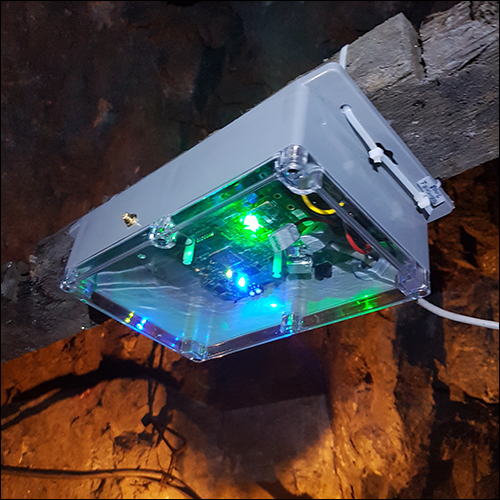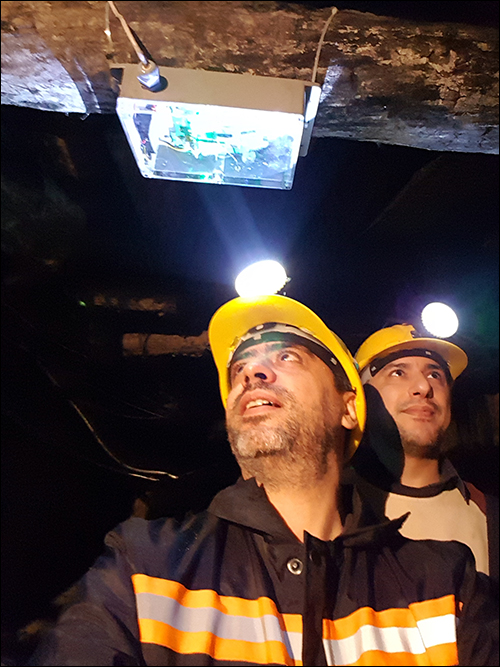For the past month, some miners in Turkey’s Taurus Mountains have been wearing Bluetooth Low Energy (BLE) beacons as part of a real-time location system (RTLS) to help their employers view their location. The Leantegra BLE system, provided by telecom technology company Tagvance, enables the mine to meet federal regulations recently enacted by the Turkish government, in order to ensure that miners can be located at any time when in tunnels.
The regulation is intended to provide a safety measure for mining personnel in the event of an emergency. The penalty for non-compliance is $25,000 for the first offense, and a one-month cessation of mining operations for the second.

Tagvance is offering the Bluetooth Low Energy beacon-based system for lead and zinc mines in Turkey to help mining operations comply with the regulation. The system includes Leantegra’s BLE WiBeat beacons worn by miners, as well as WiRange receivers that act at gateways to receive transmission data and forward it to a server. A lead and zinc mine owned by Dedeman Mining is the first to deploy the technology at its site in the Taurus mountains of Southern Turkey.
The mine in which the system is deployed consists of an underground tunnel split into multiple zones. The company needed the technology to identify each miner and pinpoint the specific zone into which he or she had gone. In that way, the firm would have real-time location data for emergencies, as well as for its own analytics.
With the deployment, WiBeat BLE beacons are worn by approximately ten miners. In this case, Leantegra’s battery-powered beacons, which are commonly used for BLE transmission to smartphones, are switched to Location Tag mode. The beacons transmit to WiRange wireless gateway readers installed at each point where individuals move toward one of two zones within the tunnels. Because each gateway is installed overhead, it captures signals coming from the zone to the right and from the left, and the software then determines the location from which the tag is transmitting (the entrance to zone one or zone two).
The beacons themselves can be worn on a helmet or belt clip, and some miners wear them on a lanyard around their neck. Each beacon’s ID number is linked to a specific miner in the software.
The WiRange gateway readers forward their data back to a single PowerGate device onsite, which hosts the dedicated local server. Leantegra’s CVO Portal software on the server can then identify that specific miner’s location according to the zone.
Altogether, the mine has six such WiRange devices installed, with another six planned for installation during phase two of the deployment. Each gateway is powered via a Power-over-Ethernet cable.
The solution does not require high location accuracy, explains Ariel Wolfe, Leantegra’s sales director, “since the task is [only] to locate an employee in one of the zones.”

Mine operators can use the Leantegra CVO Portal dashboard on the local server to view employees’ locations in real time. The system ensures that the company is regulation-compliant. The data can also be used, however, for analytics purposes, such as understanding how long each employee remains in the tunnels, and where they go. This can enable not only safety assurance, but better efficiency as well, since a mining company can identify the volume of work being done and the number of individuals involved in that work, and readjust the assignment of workers accordingly.
The system was first tested through March and early April of this year. It was taken live in mid-April.
“Besides enhancing safety conditions, this system is stipulated as legal requirement by the Turkish mining law,” Wolfe says. “They have reported already successfully passing a surprise visit by an inspector who deemed the solution suitable and satisfactory to the new regulatory stipulations.”
The mining company now plans to expand the system to cover all 600 meters (1,970 feet) of the tunnel’s length, up to 120 meters (394 feet) deep. Tagvance is also installing the Leantegra system at another mine location that covers 5 kilometers (3.1 miles) of tunnels, also in the Taurus Mountains.

